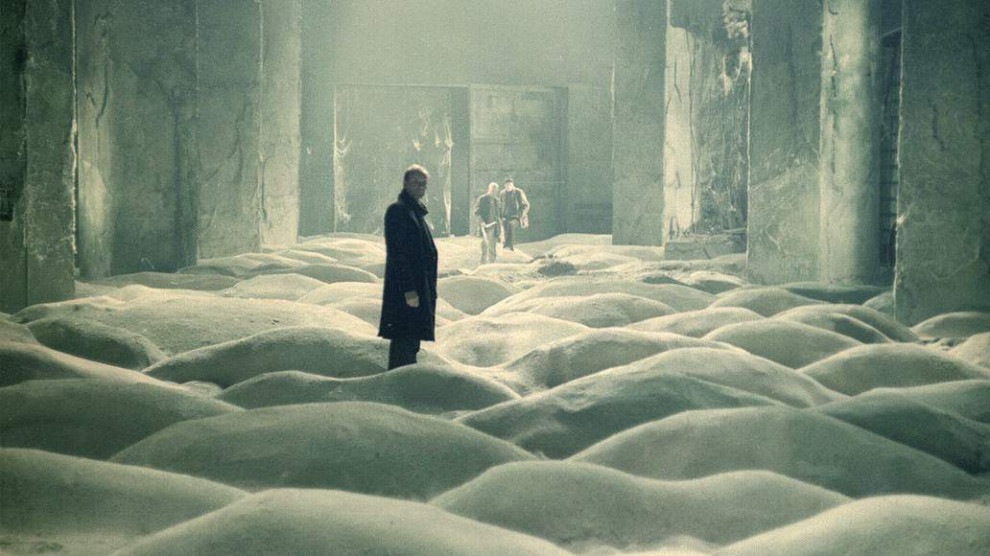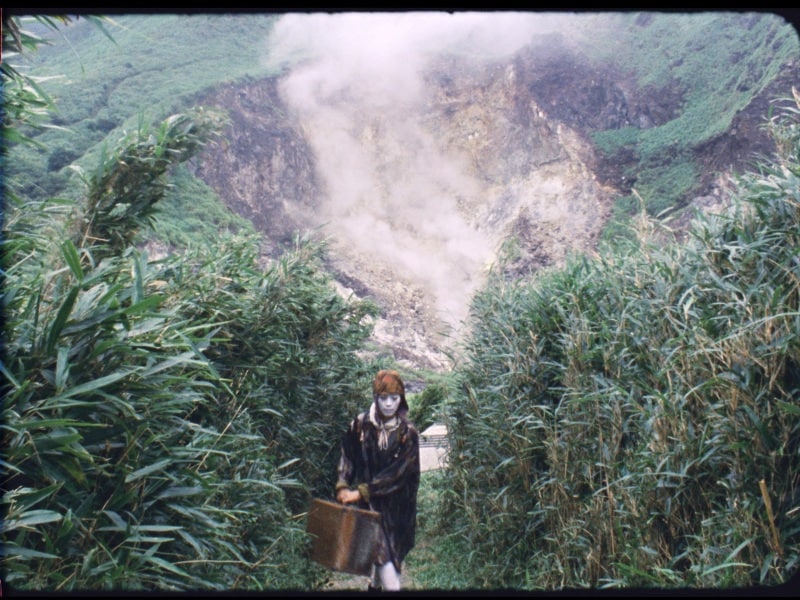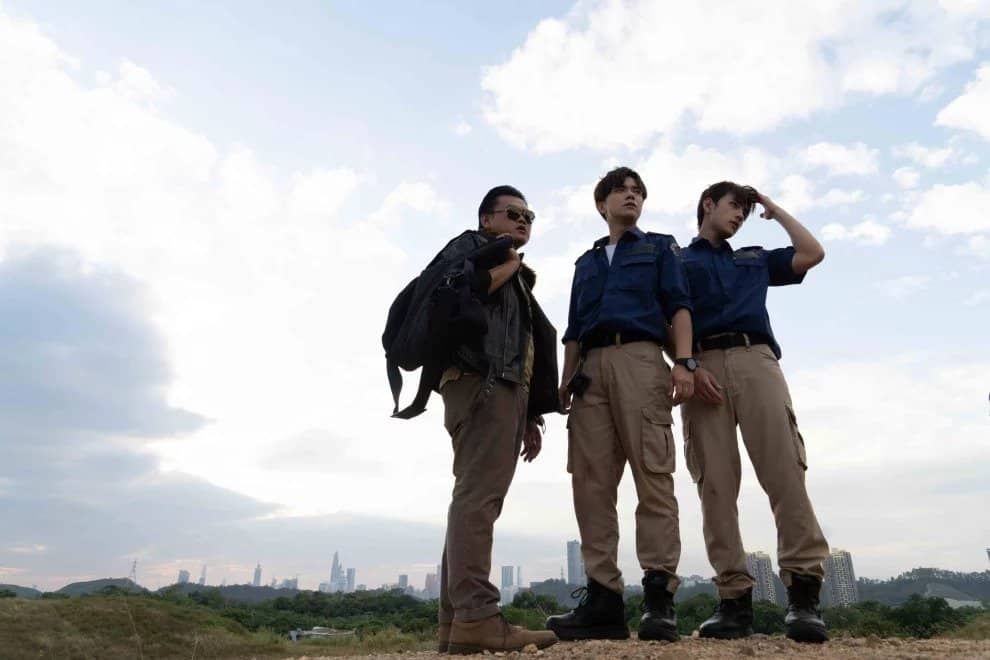“Three men can't foul it up in one day.”
“Why can't we? Sure we can.”
“Stalker”, together with “Mirror” and “Solaris”, has perhaps become something of a holy grail for film enthusiasts and cinephiles worldwide, manifesting Russian director Andrei Tarkovsky's reputation as one of the most discussed and universally liked artists (and don't you even dare criticize him) of the medium. Considering the almost universal outbreak of joy when Criterion announced a newly restored version of the film in 2017 along with a limited theatrical re-release, the admiration for the craft of this man will not cease but rather increase, given the universal nature of his art as well.
Buy This Title
Of course, one of the aspects of Tarkovsky's career, one which might have played its important role in building his reputation, was his own set of rules, poetics for film similar to Aristotle's famous work on the rules of the arts, especially theater. With regards to the early uses of film, the works of the Brothers Lumiere in France, working within the medium was “sculpting in time”, hence the title of his famous essay. Rather than presenting the impossibility of recording and presenting time, as well as designing it using cutting and camera techniques among others, the medium also had the ability be a “hieroglyph of an absolute truth”, one which demands the audience's senses more so than its intellect. With regards to “Stalker”, one can apply this philosophy in many ways, on the film's plot, characters but also its technical aspects.
Despite “Mirror” having received equal amounts of praise from audiences and critics alike, Tarkovsky was still regarded as “difficult” by Russian authorities, especially due to the intellectual nature of his film, ironic given how the director himself has repeatedly explained how his films can be easily “understood” if one is just able to feel rather than think about them. Nevertheless, the enigmatic nature of Mirror, its use of time, color and characterization were perhaps some of the challenges in his way of making a new film, since Tarkovsky tried to have a number of projects made during the 1970s, none of which ever received the necessary amount of support. According to writer Mark Le Fanu, Tarkovsky even had plans to give up on film altogether, thus concentrating on a career in the field of theater.
However, a return to the area of science-fiction after his film “Solaris” proved to be the deciding factor to ensure modest support for his next film “Stalker”, which was based on a novel by Russian writers Arkady and Boris Strugatzky titled “Roadside Picnic”. Despite limited financial resources, disputes with cameraman Georgi Rerberg of the film and the catastrophic quality of the film stock they had been working on “Stalker”, the last film Tarkovsky would make in Russia proved to be a challenging work, a film discussing features such as the relationship between man and time, man and nature but also systems of belief such as religion.
The stalker (Aleksandr Kaydanovskiy) lives with his family at the border of an area only known as the Zone, making a sparse living by giving people tours into the forbidden areas to a place called The Room, a legendary location where the innermost desires of a person would be fulfilled. Even though his wife (Alisa Freyndlikh) begs him not to continue his dangerous job, fearing he might be arrested again by the guards or worse, her husband still meets with his new customers, a writer (Anatoliy Solonisyn) and a professor (Nikolay Grinko), each one with their own motive to venture into the Zone.
As they make their way past the heavily guarded train tracks into the Zone, tensions rise between the three men with the stalker trying his best to ensure their safety while explaining the wonders of the place and the other two nearly constantly quarreling over their opinions on science, arts and the purpose of the a place like the Zone.

As with all of the films by Andrei Tarkovsky, there are certainly many interpretations, as the director has, once again, created a universal parable rather than a motion picture defined by conventions such as genre. But while the approach to consider “Stalker” as his thoughts on religion and belief, perhaps the strongest thematic and narrative thread is the idea of home, identity and belonging, even more so for the stalker than for the writer and the professor. Unlike in his previous film “Mirror”, home is however not something probably associated with a person or a memory, but a precise place, the enigmatic zone. Considering the reaction of Aleksandr Kaydanovskiy's character as he takes his first steps into the grass fields of the zone, no one would doubt the obvious joy, the sense of peace and emotional well-being like seeing an old friend back, thus embracing him/her with open arms. Falling into the thick grass of the zone, he knows he will not be hurt here, unlike in the world outside.
Considering his more or less constant contact with the zone through his tours, but also his daughter, a “zone victim” and “mutant”, the stalker is aware of another world, of another sphere outside the unwelcoming world in ruins he and his family still live in. Similar to the future in “Solaris”, nothing about the future in “Stalker” looks either technologically advanced or progressive, in fact the world has started to mold like the pages of old books as perhaps suggested by the washed-out yellow images of the world surrounding the zone. Like the industrial landscape rusting in the wreckage of what once was the area around the nuclear plant of Chernobyl after the accident of 1986, the world in “Stalker” seems to have lost its touch with worldly matters, most of all the element of time.
In fact, much of the world within the zone seems to suggest a difference in the concept of time between outside and inside the zone. On their walk through the zone seems to be lost at one point only to re-connect with the other two after a few minutes, much to their surprise. Like the ever-changing surface of the planet Solaris, the design of the zone does not follow natural laws like physics, and even escapes the more literary approaches to make sense of it by the writer. Concepts such as reasoning or intellectuality as represented by the writer and the professor will never be able to fully grasp the zone or anything in it, as their belief in anything beyond their reality raises their doubt as they search for ways to explain it or hide it within their detached world view.

Like any film of his body of work, “Stalker” is also a film rewarding for those who will watch it repeatedly. Even though it is more straight-forward than “Mirror”, Tarkovsky has made a film with an incredible amount of visual references, details and ambiguous scenes conveying beauty as well as provoking a reaction. Especially now that the film has been magnificently restored by Criterion, so much now is revealed, probably changing the viewing experience for those used to the more unstable copies of the movie. As the camera moves beyond the sleeping stalker on the grassy ground, we see various worldly items buried deep underneath the sands – a pistol, coins, a calendar, multiple gears of different sizes and various other cultural artifacts – all of which have lost their meaning within the zone, a place out of this world, paradise or hell. The choice is for those who come near it, for people like the stalker it is simply home.
“Stalker” is a multi-layered film whose science-fiction surface touches upon topics ranging from home and identity to belief. It is a movie with some of the most beautiful shots in cinema, a fantastic, vulnerable performance by Aleksandr Kaydanovskiy and masterful sound design. It is a film just as fascinating as the stories surrounding its production and shooting as well as a sparkle of hope at its very end. Just like the mysterious room in the Zone will reveal its secrets to those willing enough to enter, so will this film, but in the end – just like with the room – everything may just be an illusion or something exclusive to you.
Sources:
Tarkovsky, Andrei (2016) Die versiegelte Zeit. Gedanken zu Kunst, Ästhetik und Poetik des Films. Third edition. Berlin: Alexander Verlag
Strick, Philip (1981) Tarkovsky's Translations. Sight and Sound 50, no.3
Naugolnykh, Sergei (2016) Shooting Stalker.
Le Fanu, Mark (2017) Stalker: Meaning and Making.
With the exception of 1) all of the above mentioned sources are either part of the Bluray-releases of the film by Curzon Artificial Eye or Criterion.
















